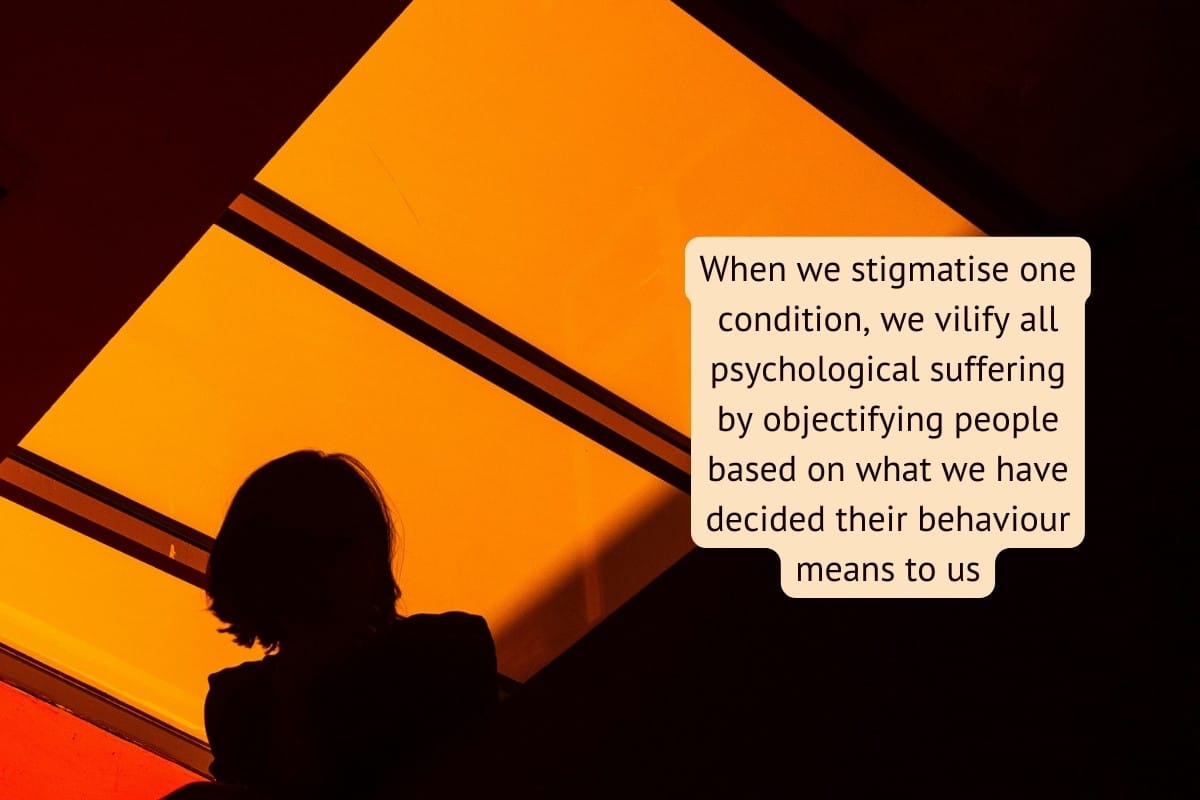An expert look at the complexity of human behaviour, and why we should express caution when using diagnostic labels
In today’s world of wellness and self-improvement, psychological terminology is no longer confined to the therapy room. With many of us searching for a deeper understanding of ourselves and our relationships, clinical concepts are fast becoming public knowledge. But, when removed from their original context, meaning can become distorted and nuance lost, leading to widespread labelling and stigma.
Narcissism is an obvious current example, with #narcissist generating more than 2 million posts on Instagram at the time of writing, despite narcissistic personality disorder only occurring in approximately 1–6% of the UK population in 2021 according to NetDoctor. The disorder has gained rapid traction on social media as a pejorative term that is disproportionately applied, both to men who behave undesirably in romantic relationships and mothers of adult millennial females. Narcissism has become synonymous with persecutors of emotional, psychological and relational abuse, despite the National Domestic Violence Hotline stating “mental health issues do not excuse or directly cause intimate partner abuse”.
What is narcissism and how does it develop?
Narcissism takes its name from Greek mythology (after the figure Narcissus who became absorbed by his own reflection in a pool of water), and originated in the mental health sphere as a psychoanalytic process of personality construction.
In secure infant development, our feelings are mirrored to us by a sensitive and responsive caregiver, and this reciprocal early relationship forms our sense of self. For example, an infant is not born knowing what fear is, but when scared, they will feel an inexplicable sensation and cry. The caregiver will offer comfort, which relieves this feeling. With time and repetition, the infant learns that this sensation is fear, and that they can receive soothing from others, as well as eventually self-soothing, too.
Without effective recognition and mirroring from the caregiver, the infant cannot make sense of its own impulses, leading to a deficit in understanding of self and others. This can lead to many outcomes, but someone with a narcissistic personality structure has learned that manipulation gives them the best chance of getting their needs met, and they come to consider themselves superior to others. These are unconscious defences which hide the chronic shame and lack of self-esteem that has resulted from the deficit of recognition in early life. As with all defence mechanisms, these narcissistic strategies exist on a spectrum spanning a healthy level of personality adaptation to a diagnosed mental health disorder.
How is narcissism misunderstood and why is this harmful?
On social media and within the wider public discourse, narcissism has become conflated with meaning more closely related to psychopathy – an even rarer presentation of an altogether different personality disorder. Narcissism has become a misguided umbrella term for perpetrators of emotional abuse, and is mainly applied indiscriminately to two groups: male ex-partners and mothers, both of whose relationship behaviour is considered objectionable or intolerable.
Labels such as ‘The Narcissist’ homogenise such behaviour, and falsely represent it as one character structure that describes the totality of a person’s being. This is comparable to calling chaotic behaviour ‘schizophrenic’, or describing healthy levels of cleanliness as ‘a bit OCD’. Such misuse of diagnostic language creates what is known as a ‘sticky label’, where the person is judged according to the stigma associated with their disorder. These sticky labels have much more to do with the social stereotypes of a mental health condition than the factual reality of their symptoms and behaviours. When we stigmatise one condition, we vilify all psychological suffering by objectifying people based on what we have decided their behaviour means to us.

What about narcissistic abuse?
Psychological and emotional abuse is fortunately becoming increasingly recognised in our society. After coercive control became a legal offence in 2015, a greater level of public attention has been drawn to the abusive relational dynamics that occur in domestic and Intimate Partner Violence (IPV).
However, on social media, a collection of abusive behaviours has been coupled with narcissistic personality traits, and is now colloquially referred to as ‘narcissistic abuse’, despite this term not being recognised legally, or by agencies working with IPV and domestic violence. While people with narcissistic traits have difficulties in relationships, conflating narcissism with abusive behaviour does not provide an adequate explanation, or justification for abuse.
In the rare cases that narcissism is an accurate and diagnosed perception of an abusive partner’s psychology, using it as a sole reason for why abuse occurred robs the survivor of the essential elements of processing, recovering, and moving on. New Leaf Counselling Group states: “A victim of domestic violence must begin their healing process from a position of their own personal integrity in order to create an internal sense of safety (fight/flight/freeze) characteristic of a ‘trauma response’ commonly experienced after the survival of prolonged exposure to abusive and controlling behaviour.”
Simply labelling the abusive partner as ‘The Narcissist’ as a justification for their abuse keeps the focus on the perpetrator, and denies the survivor their own subjective experience – which is, at best, unhelpful, and, at worst, a replication of the abusive dynamics.
Furthermore, when abuse is justified using one psychological profile, as it is with narcissism, it can confuse survivors as to which available support options are appropriate. In recovery from abuse, it is vital to seek well-qualified support from a trained mental health professional who is registered with an ethical body.
Human psychology is complex and often takes time to understand. Attempts to simplify it with labelling discounts this fundamental part of human nature, and minimises experiences of abusive relationships. Labelling creates harmful stigma, equating complex mental health issues with abuse and violence. Moreover, this also creates further harm for survivors of relational abuse from accessing appropriate support, and arriving at the depth of understanding necessary to truly move on and protect themselves in future.


Comments